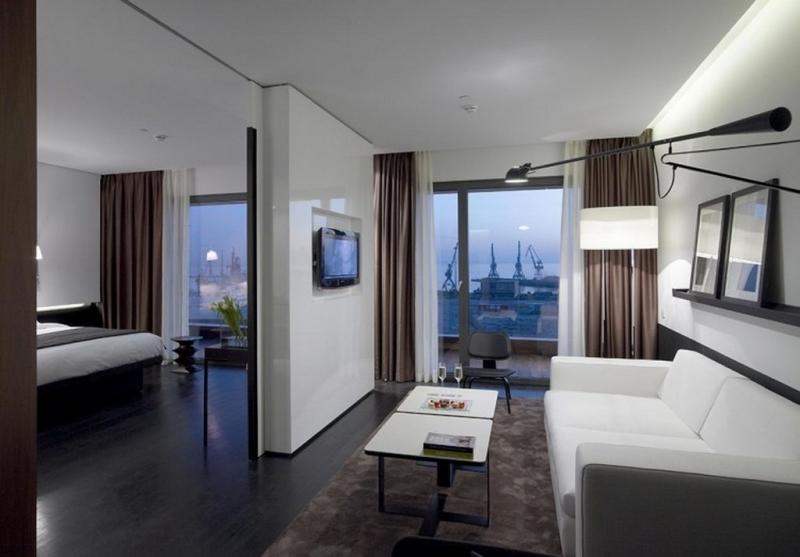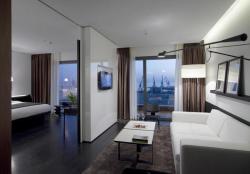What are the best interior design ideas?
Masterful interior design involves creating a harmonious and aesthetically pleasing environment that reflects your personal style and enhances the functionality of the space. Here are some of the best interior design ideas to transform your space:
Open Concept Living:
- Embrace an open concept layout to create a sense of spaciousness and flow between different areas of your home. This is especially effective for combining living, dining, and kitchen spaces.
Statement Furniture:
- Invest in a few pieces of statement furniture that become focal points in each room. This could be a unique sofa, an eye-catching coffee table, or a standout accent chair.
Mixing Patterns and Textures:
- Experiment with mixing patterns and textures in your decor. Combine different fabrics, materials, and patterns to add depth and visual interest to the space.
Neutral Color Palettes:
- Choose a neutral color palette as the foundation of your design. Neutrals like whites, grays, and beige provide a timeless and versatile backdrop that allows other elements to stand out.
Smart Lighting Solutions:
- Incorporate a variety of lighting sources, including ambient, task, and accent lighting. Consider smart lighting systems that allow you to control the ambiance and color temperature.
Customized Built-Ins:
- Optimize storage and display space by incorporating customized built-in shelves, cabinets, or bookcases. This not only adds functionality but also creates a seamless and cohesive look.
Biophilic Design:
- Bring the outdoors in by incorporating biophilic design elements. Use natural materials, add indoor plants, and maximize natural light to create a connection with nature.
Accent Walls:
- Create an accent wall using bold paint colors, wallpaper, or textured finishes. This draws attention to a specific area and adds a dynamic element to the room.
Functional Minimalism:
- Embrace a minimalist approach with functional furniture and clean lines. This creates a clutter-free and serene environment while maximizing the use of space.
Mixing Vintage and Modern:
- Combine vintage and modern elements for a curated and eclectic look. This fusion adds character and a sense of history to your space.
Strategic Mirrors:
- Use mirrors strategically to enhance natural light and create the illusion of more space. Large mirrors can also become statement pieces on their own.
Artwork and Gallery Walls:
- Curate a collection of artwork or photographs to create a gallery wall. This personalizes your space and serves as a focal point for the room.
Multi-Functional Furniture:
- Choose furniture that serves multiple purposes, especially in smaller spaces. Examples include storage ottomans, sofa beds, and extendable dining tables.
Monochromatic Color Schemes:
- Create a cohesive and sophisticated look by sticking to a monochromatic color scheme. Use different shades of the same color to add depth and interest.
Layered Textiles:
- Layer textiles like rugs, throws, and cushions to add warmth and texture. Mixing different materials and patterns can make your space feel inviting and comfortable.
Bold Ceilings:
- Consider making a statement with your ceiling. Paint it in a bold color, add a unique texture, or incorporate decorative molding for added visual interest.
Personalized Decor:
- Infuse your personality into the space with personalized decor items. This could include family photos, artwork, or items collected from your travels.
Hidden Storage Solutions:
- Integrate hidden storage solutions to maintain a clean and organized look. This can include under-bed storage, built-in cabinets, or cleverly designed furniture with concealed compartments.
Remember that the best interior design ideas are those that align with your personal taste and lifestyle. Consider the functionality of the space, prioritize comfort, and let your creativity shine through to create a home that truly reflects you.
Compilation of the best interior design ideas
Interior design is the art of creating a space that is both functional and aesthetically pleasing. It involves the selection and arrangement of furniture, fixtures, and accessories to create a cohesive and inviting environment. There are many different interior design styles, but some of the most popular include:
Modern: Modern interior design is characterized by clean lines, simple forms, and a minimalist aesthetic. It often uses neutral colors, natural materials, and open floor plans.
Traditional: Traditional interior design is characterized by rich colors, ornate details, and a sense of formality. It often uses antiques, fine fabrics, and upholstered furniture.
Eclectic: Eclectic interior design is characterized by a mix of different styles, patterns, and textures. It often uses vintage finds, DIY projects, and personal touches.
Scandinavian: Scandinavian interior design is characterized by a focus on functionality, simplicity, and natural materials. It often uses light colors, wood accents, and pops of color.
Industrial: Industrial interior design is characterized by exposed brick, concrete walls, and metal accents. It often uses repurposed materials and a minimalist aesthetic.
What are some highly recommended interior design concepts?
Use color strategically. Color can have a big impact on the mood of a room. Choose colors that you love and that will make you feel good in your home.
Incorporate natural elements. Plants and flowers can add a touch of life and color to any room. They can also help to purify the air and improve your mood.
Play with texture. Texture adds visual interest and depth to a room. Combine different textures, such as smooth and rough, soft and hard, to create a layered and inviting space.
Mix and match patterns. Don't be afraid to mix and match patterns to create a unique and stylish look. Use patterns in moderation and choose patterns that complement each other in terms of scale and color.
Accessorize with personality. Accessories are the perfect way to add your personal touch to a room. Use them to showcase your favorite collections, hobbies, or travel souvenirs.
Are there popular trends or innovative approaches in interior design?
Sustainability: There is a growing trend towards using sustainable materials and eco-friendly practices in interior design. This includes using recycled materials, low-VOC paints, and LED lighting.
Technology: Technology is playing an increasingly important role in interior design. This includes smart home devices, voice-activated lighting, and interactive wall art.
Personalization: People are increasingly creating spaces that reflect their unique personalities and interests. This includes incorporating vintage finds, DIY projects, and handmade pieces.
Well-being: There is a growing focus on creating spaces that promote well-being. This includes using natural materials, incorporating plants, and creating spaces that are clutter-free and well-lit.
Flexibility: People are increasingly looking for spaces that can be adapted to different uses. This includes creating multi-purpose rooms, using flexible furniture, and incorporating storage solutions that can be hidden away when not in use.
These are just a few of the many popular trends and innovative approaches in interior design. The best approach is to experiment with different styles and find what works best for you and your space.
Here are some additional tips for creating a stylish and functional home:
Start with a plan. Before you start shopping, take some time to think about what you want your space to look like. What kind of mood do you want to create? What activities will take place in the space?
Consider the flow of the space. How will people move around the room? Make sure there is enough space for people to walk comfortably and for furniture to be arranged in a way that is functional and inviting.
Use scale and proportion. The size and shape of furniture and accessories should be in proportion to the size of the room. For example, a large sofa would look out of place in a small room.
Pay attention to the details. The little things can make a big difference in the overall look of a room. Make sure the finishes are consistent, and that the lighting is appropriate for the space.
Don't be afraid to experiment. The best way to find your own unique style is to experiment with different colors, patterns, and textures.


